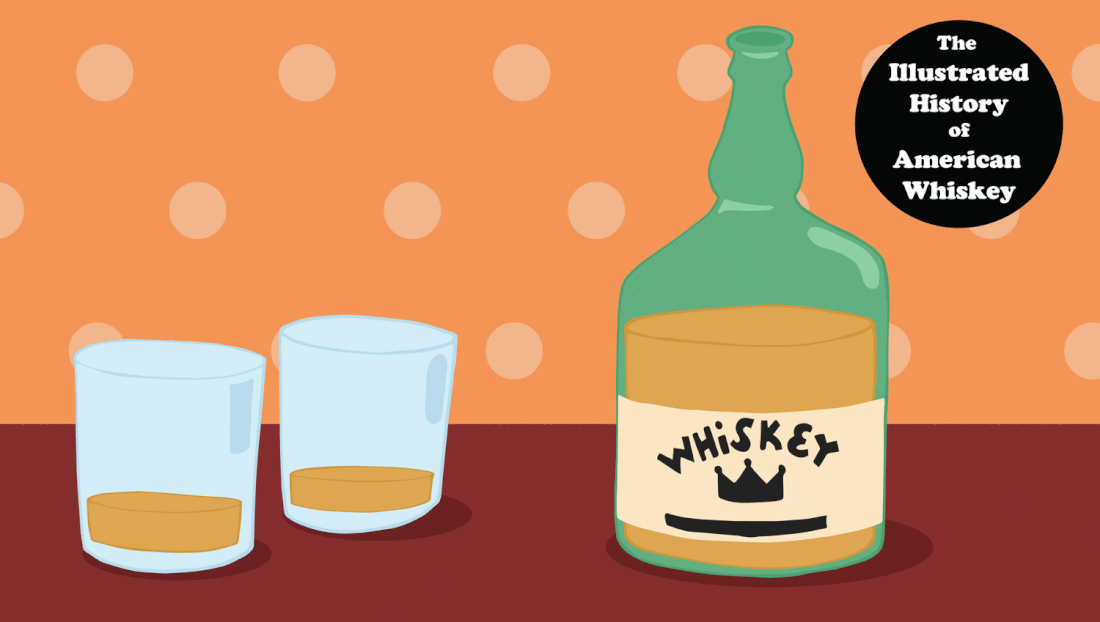
#6
AN ILLUSTRATED HISTORY OF AMERICAN WHISKY
10 Feb 2017 By David Fuhrmann-Lim
A look back at whiskey’s improbable rise, from surviving colonial rebellions to defying odds in the “white spirits” era.
By Aaron Goldfar, illustrations by Matt Schieble
More than just being well-stocked in bars across the country, whiskey has become a sensation that drives many modern men mad. Halfway decent bourbons and ryes fly off of store shelves, while truly great ones entice folks to queue up as though Michael Jordan were coming out of retirement. Fanaticism over the so-called best of the best bottles—your Pappys, BTAC, and other “LEs”—has even led to stores holding lotteries so that both geeks and average Joes can have a shot at obtaining these “unicorn” bottles. Refilling scandals and bottle heists aside, the industry wasn’t always so flush with excitement. In fact, most of whiskey history has been about simple survival, starting from its earliest days in this country.
Americans were still painting on cave walls when whiskey was first emerging in Europe in the early 1000s. And many of the great Irish whiskey and Scotch houses were already up and fully operational by the time some American (maybe named Jacob Spears) finally figured out that throwing corn distillate into charred oak barrels made for a tasty spirit. Eventually, bourbon (and, to a lesser extent, rye) whiskey’s history would go lockstep with this country’s history. It survived colonial rebellions, was encouraged to “go west, young man,” and cheekily managed to exist during prohibition (and the even darker recent era of vodka adoration) before finally becoming something not just as American as apple pie or Quarter Pounders, but something officially tied to the U.S. of A.
To find out more about the history of the world’s greatest spirit, we spoke to Fred Minnick, perhaps this country’s preeminent whiskey writer, who recently wrote Bourbon: The Rise, Fall, and Rebirth of an American Whiskey. In the process of talking to Minnick, he explained how whiskey has gone through a continuous series of ups and downs, battles and rebellions, surviving setbacks, and ultimately proving victorious—for the time-being.
Here is the illustrated history of American whiskey.
The Whiskey Rebellion and Kentucky Migration
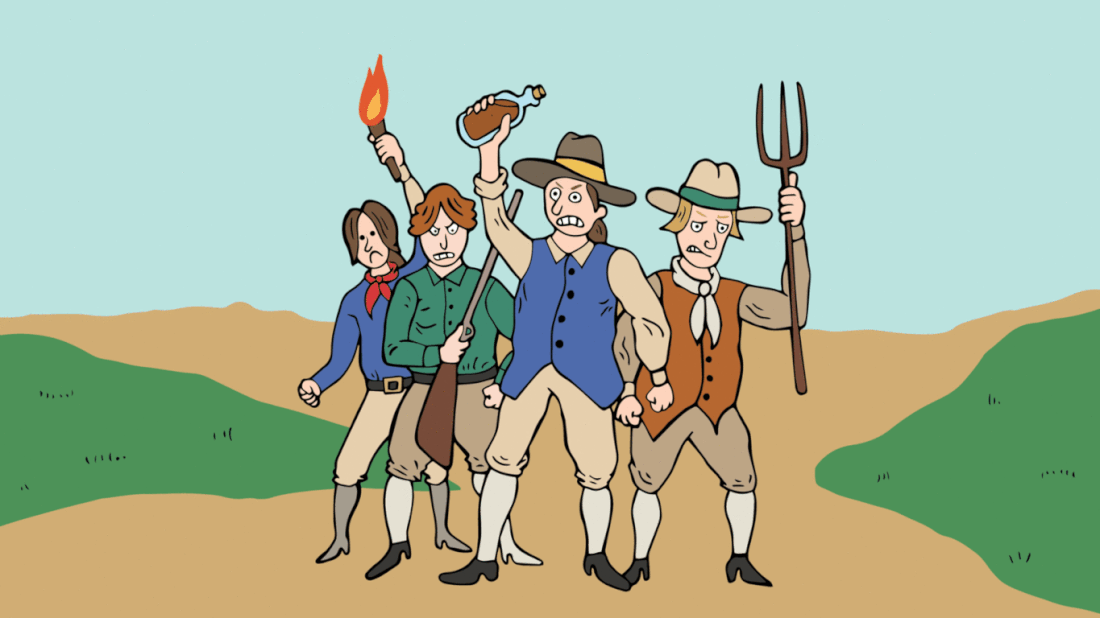
The Old Bushmills Distillery was opened in Northern Ireland in 1608, but it would take nearly 200 more years for America to put its own whiskey on the map. As the country was forming in the late-1700s, many folks were encouraged to move west—either for religious reasons, or simply to gain land. A lot of these people were Scottish, Irish, and English, who already had a history of distilling in their homelands. One man, Basil Hayden, was charged with bringing Catholics from Maryland to Kentucky in 1785. It didn’t hurt that he was also a distiller, as were most farmers of the time (today two bourbons are named after him, Basil Hayden and Old Grand-Dad).
A whiskey tax was set forth in 1791 by treasury secretary Alexander Hamilton in the hopes of paying off the debt of the American Revolution. This was the first tax imposed on a domestic product by this new federal government, and a lot of distillers didn’t want to pay it. Thus rose the Whiskey Rebellion, causing even more people to move to the more tax-friendly Kentucky and Tennessee. Despite the protests and violence, the tax remained until 1802 when Republican President Thomas Jefferson finally repealed it—a maneuver most voters thought was simply a ploy to placate the rich. (Distillers were the 1%ers of their era.)
Creating Legacies in the Tax-Free Era
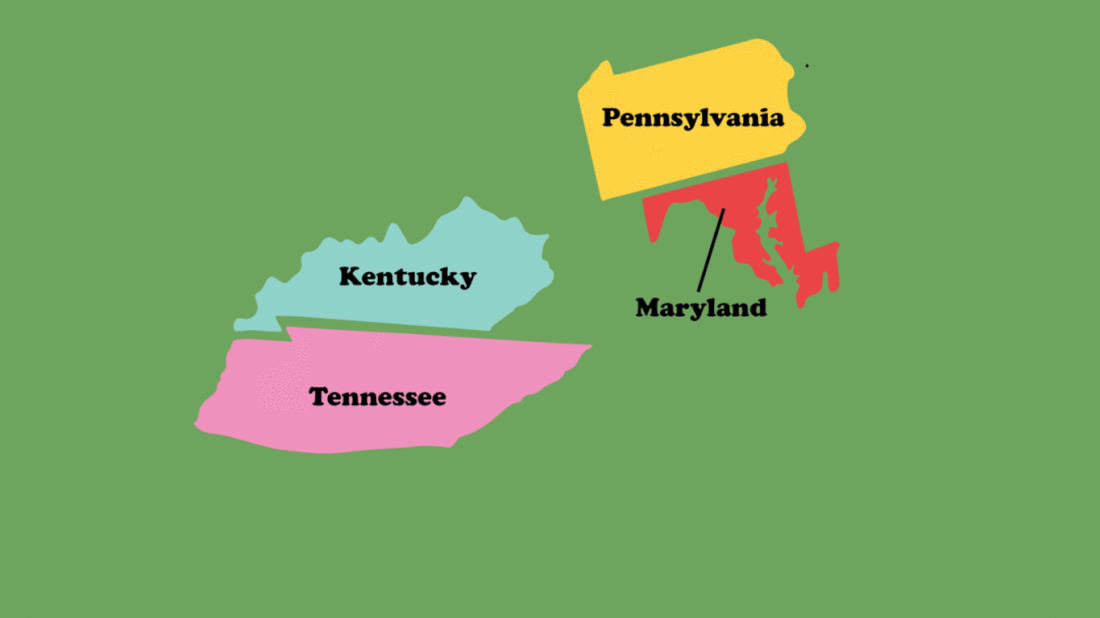
Now that American whiskey distillers could produce whiskey tax-free, there was incredible growth. (That wasn’t the case for rum producers, who would get taxed heavily on foreign molasses.) Kentucky, Tennessee, Maryland, Pennsylvania all reaped the rewards, as whiskey production flourished pretty much anywhere that touched good water and had good grains. (America was mainly a rye whiskey country until the early-1800s.) Kentucky became especially powerful as they had exceptional corn and limestone-filtered water, plus easy access to rivers, enabling them to get their whiskey on a flatboat to St. Louis or New Orleans. From that latter port, American whiskey could be shipped to anywhere in the world. Suddenly, family whiskey legacies and their respective brands began to spread: T.W. Samuels whose family would eventually start Maker’s Mark, and, of course, the Beam family.
Bottled-in-Bond and Prohibition Loopholes

Post-Civil War, American distillers finally felt a need to protect their products and assure consumers of quality. Bottlers and rectifiers had been taking distilled whiskey and adding prune juice, other spirits, and even tobacco spit to bottles while still slapping a “bourbon” label on it. In 1897, bourbon distilleries successfully lobbied congress for the Bottled-in-Bond Act of 1897. To get a “Bottled-in-Bond” designation, a whiskey had to be the product of one distillation season of one distiller at one distillery, aged in a federally-bonded warehouse under government supervision for at least four years, then bottled at exactly 100 proof.
Even so, it was a bad time to drink in America, as Prohibition became a reality. Faced with this challenge, distilleries were forced to exploit a loophole that allowed them to profit from “medicinal” whiskey. Throughout Prohibition, six noted whiskey distillers were able to supply “a very sick America” with its bourbon by simply affixing a $3 prescription label to the back of their bottles. (Drinkers, er patients, also had to have a doctor claim they were suffering from one of 27 acceptable “ailments.”) Since few of the smaller, independent distilleries could afford to stay in business during Prohibition and then World War II, this era saw the emergence of big conglomerates. Behemoths like Schenley, Seagram, and National gobbled up many family-run, mom and pop distilleries, putting an end to many legacies and histories.
A Distinctive Product
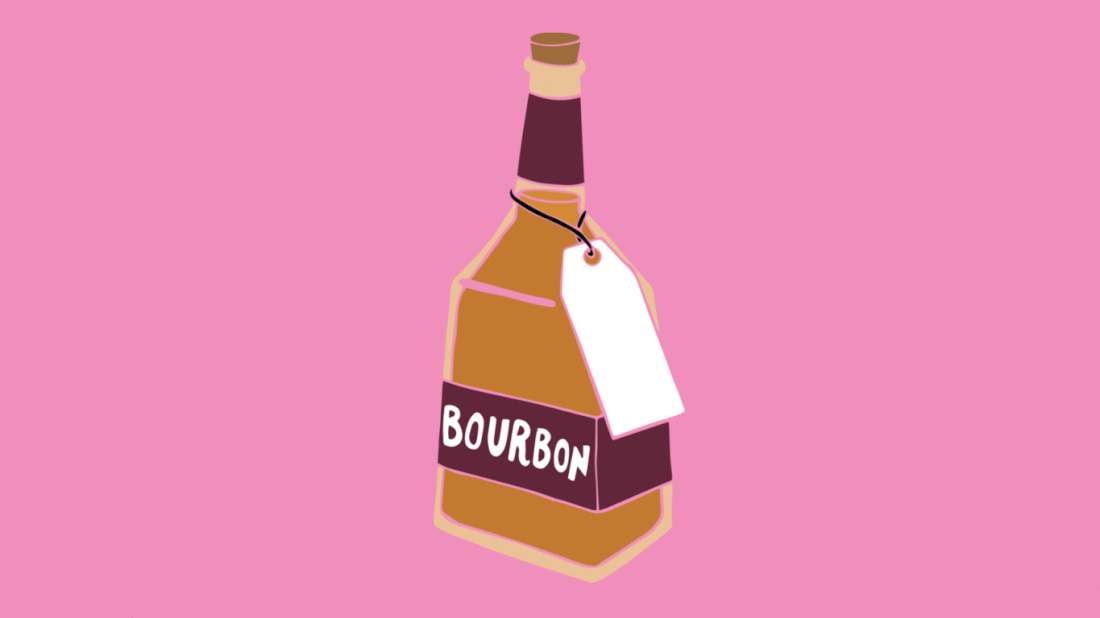
In 1958, the Bourbon Institute was formed for the sole purpose of trying to make bourbon a unique product of the United States—both to assure a certain standard of quality while preventing foreign imitators from cutting into market share. Lobbying Congress, the Institute pushed to get all tariffs lifted and various laws in foreign countries more favorable to their industry. Congressman James Lindsay, who would later become mayor of New York City, tried to block the declaration. (It was no coincidence he happened to have interests in a Mexican bourbon distillery.) The Bourbon Institute was hoping for the declaration to be passed on April 30, 1964—the 170th anniversary of President George Washington being sworn into office—as bourbon people have always tried to make their product as connected to American history as possible. (Even if they sometimes have to spin a few false yarns.) It took until May 4, 1964, though, for Congress to finally recognize bourbon as a “distinctive product of the United States.” It was now strictly allowed to be produced in America (not just in Kentucky), and nowhere else in the world.
A Battle for Market Share
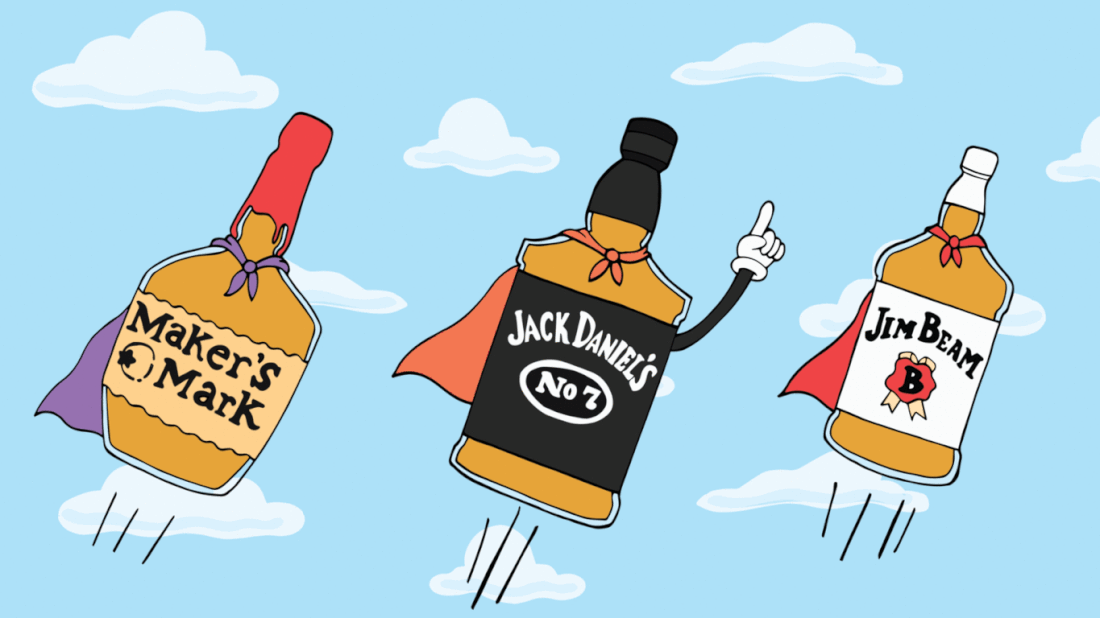
Nevertheless, by the 1960s, white spirits had taken over our country’s back bars—a devastating blow to the whiskey industry. The bourbon distilleries were forced to create an entirely new product to compete: light whiskey, which had a more neutral profile like vodka. Light whiskey was a disaster, and by the early 1980s bourbon sales had plummeted, the spirit pretty much left for dead.
Jim Beam and Jack Daniels were still fighting the good fight, though, with Jack using their unofficial relationship with Frank Sinatra to try and buoy sales. Maker’s Mark became a very important bourbon at this time, essentially creating the premium bourbon category, while Elmer T. Lee’s Blanton’s (1984) and Booker Noe’s Booker’s (1988) created the first single barrel and small-batch offerings. Initially they flopped domestically, but became huge successes in Japan—a country almost single-handedly generated revenue for the American whiskey industry in the 1980s and early 90s.
Eventually, the bourbon distilleries refocused their attention on their own country’s consumers and it finally worked. Tourism to the “Bourbon Trail” began to take off, as did visits to the annual Kentucky Bourbon Festival. Soon, folks were standing in line for rare bottles, and a bourbon black market had formed to swap the likes of Pappy Van Winkle and George T. Stagg. Despite these successes, there’s always been a struggle for the whiskey market to gain and then maintain market share. It may not be vodka today, but there’s always a less-complex spirit ready to pounce and control the world’s “throat share.” Same game, different opponents—that’s just what it’s like to be a whiskey distiller.
Read it at First We Feast
Like this? Here are 33 whisky terms you should know

You might be interested in...
JUST JACK
America's Best-Selling Whiskey New Premium Range Is So Good, You Can Drink It On Its Own.
THAT '70S SHOW
A Range of Influences, From 1970s Italian Design to Art Deco Details, Informed Designer Camilla Deterre's Interiors For Primo's Bar and Lounge in Tribeca.
FOR THE LOVE OF WHISKY
Whisky (or Whiskey, if it’s American or Irish) is Having Its Moment in the Sun, Inside the Bars, on the Menus, and in the Index Market.
JUST JACK
THAT '70S SHOW
FOR THE LOVE OF WHISKY